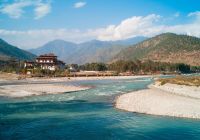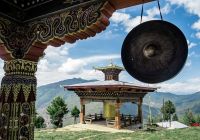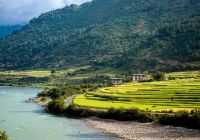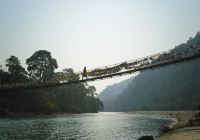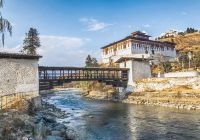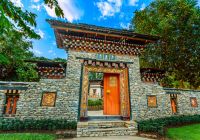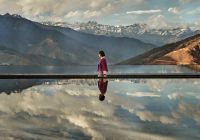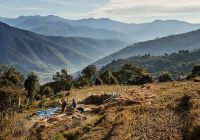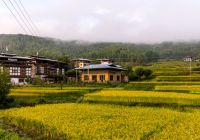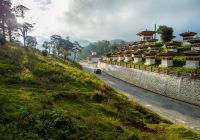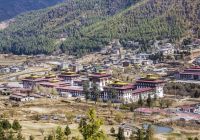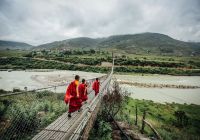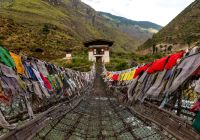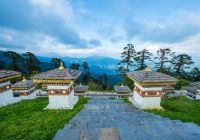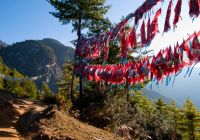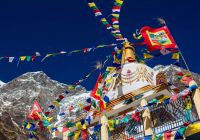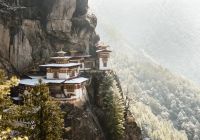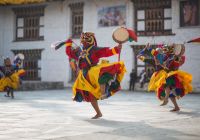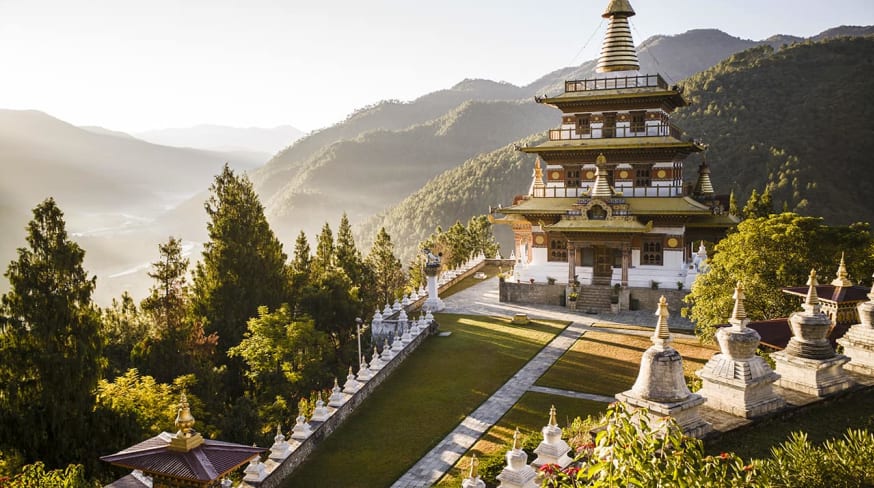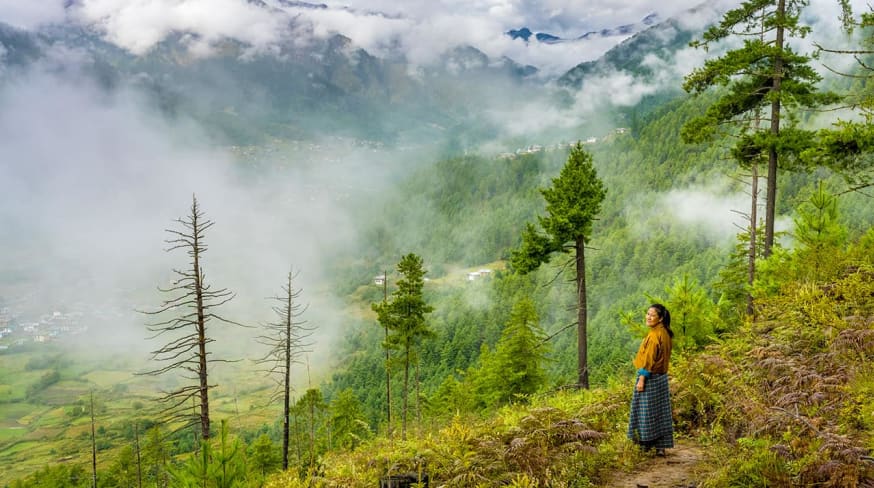Destination Bhutan
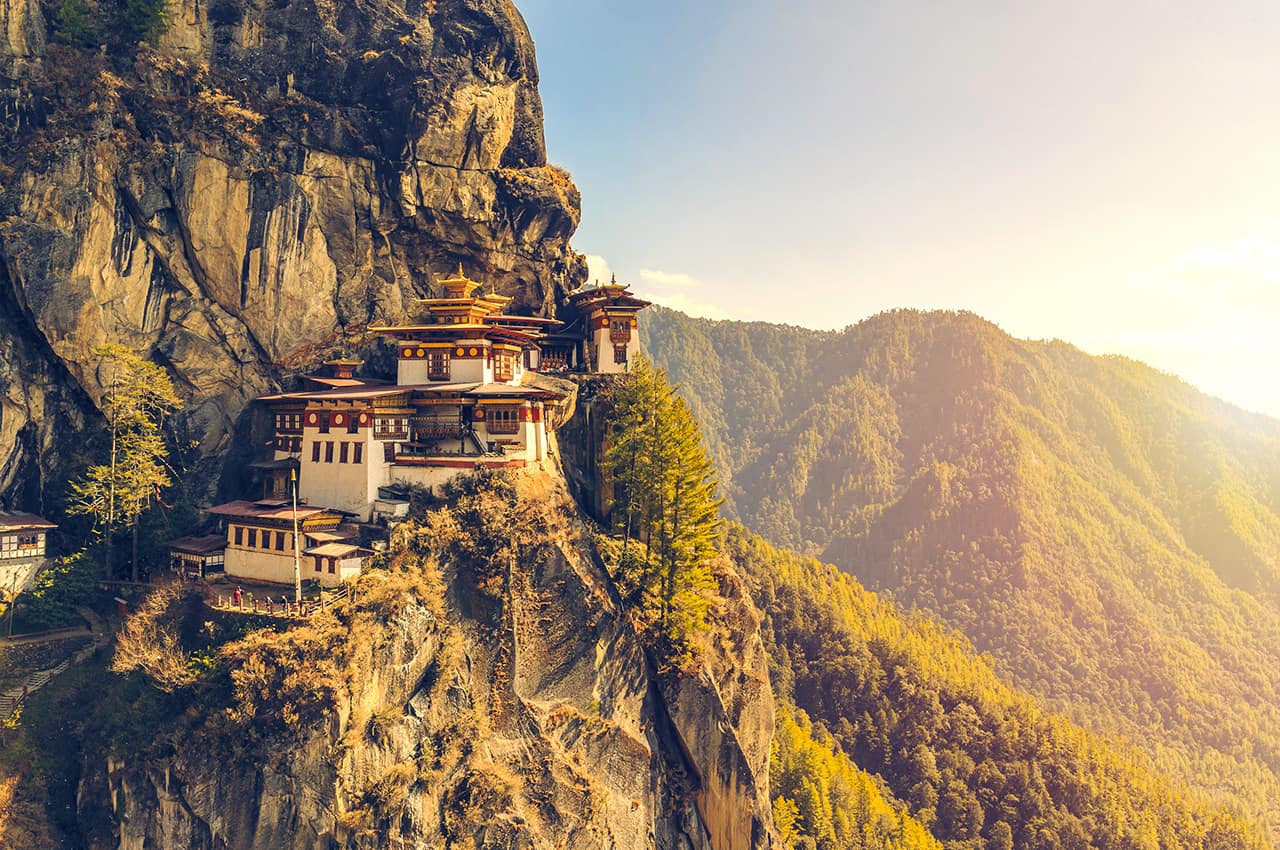
Bhutan and its religion go together. As a result, the people's serenity and devotion are added to their heritage in such a way that it becomes the perfect destination for those seeking peace of mind in the country of the Ministry of Happiness.
Bhutan — The happiest country in the world
Bhutan is located in South Asia, at the eastern end of the Himalayas - between the giants China and India, but opened its borders to foreigners in 1974, after centuries of isolation and many discussions about possible sociocultural impact. In the same way, the Bhutanese people are protective of their culture and tourists' access is regulated by the government, in order to prevent the number of foreigners from being greater than the country can accommodate.
There is so much to see in Bhutan. Just as the landscape varies from subtropical plains to subalpine heights in the northern Himalayas, the architecture is also one of the country's greatest attractions. As a result, wooden and taupe buildings and houses, with hand-painted roofs, are a local peculiarity. In fact, in many buildings, penis designs adorn the whitewashed walls, in honor of the guru Drukpa Kuenley, god of fertility.
In 2008, Bhutan made the transition from absolute monarchy to constitutional monarchy and held its first general election. In this way, it became a member of the United Nations Organization and the South Asian Association for Regional Cooperation.
Touristic spots
Thimphu
Capital of Bhutan, Thimphu is the country's political and economic center. It was created in 1955 and today it is a bustling city located on the banks of the Thimpu Chuu, in the hills of the Thimphu Valley. Above all, it is the official residence of the Bhutanese royal family and houses unique attractions, as well as the National Chorten Memorial - built for world peace - and the Kuensel Phodrang - known as Buddha Point, because it has the largest Buddha statue in the country.
Things to do in Thimpu
- Walking around the city center is a simple tour, but one that leads the traveler to understand more of the local culture. Like the busy streets, the guard seems to orchestrate the traffic, which added to the local architecture make the scene unique.
- Visit to the Dechencholing Palace: it was once used as a royal residence, but today the country's National Assembly.
- Chorten Memorial: built in memory of King Jigme Dorji Wangchuk, considered the father of modern Bhutan. Inside, visitors can find paintings and statues that show a profound vision of Buddhist philosophy.
Paro
Considered one of the most beautiful valleys in the entire country, Paro was historically the center of important trade routes to Tibet and is home to the country's only international airport, as well as some of the most exquisite monasteries and temples in Bhutan, with a rich traditional architecture.
What to do in Paro
- Taktshang Lhakhang (Tiger's Nest): one of the most famous monasteries in Bhutan. It is built on the slope of a cliff 900 meters above the Paro Valley and is Guru Rinpoche's meditation site. As a result, it became a sacred place in the Buddhist religion, visited by the Bhutanese at least once in their lives.
- Farm houses: Paro is comprised of the beauty of farm houses, which are traditionally colorful and ornate. During a visit, tourists are greeted by the farmer himself, in order to show a little more of his local culture.
- Ta Dzong: It was built in the 17th century to protect the Rinpung Dozng Monastery from inter-valley wars, but it houses a national museum with relics, postage stamps, and religious paintings.
Bumthang
Bumthang's individuality sets it apart from other destinations. In addition, it is the district with the largest number of temples and traditional sacred sites in Bhutan, which makes the region profoundly spiritual and shrouded in many religious legends.
Although the entire district is known as the Buthamng Valley, it is comprised of the four mountain valleys of Ura, Chumey, Tang, and Choekhor.
Things to do in Bumthang
- Kurje Lhakhang: the junction of three temples — the first, built in 1652 on the site where Guru Rinpoche meditated in the 8th century. The second, built in a cave where a rock bears the mark of Guru's body (therefore the most sacred) and the third, built in the 1990s by the Queen Mother. In addition, the complex of temples is completely surrounded by a wall of 108 chortens (small temples without doors or windows).
- Buli Lhakhang: complex of three temples, where the first floor has pillars and paintings dating back to its construction. The second and third were renovated in the 20th century and feature the Buddha statues and the deities of longevity.
- Dorjibi Weaving Center: a women's cooperative formed to develop the region's weaving culture and generate extra income for local families. As a result, exquisite fabrics in traditional robes are produced in Dorjibi.
Punakha
Former capital of Bhutan (until 1955) it is still the winter headquarters of Je Khenpo (Chief Abbot). Blessed with a temperate climate and fed by the Pho Chu and Mo Chu rivers, it is therefore the most fertile valley in Bhutan.
Things to do in Punakha
- Punakha Suspension Bridge: built over the Pho Chu River, it is about 160 meters long. Adorned with prayer flags, it overlooks the valley of the mountains and the river.
- Chimi Lhakhang: Known as the temple of fertility, many couples who wish to have children pray at this temple. To get to the building you need to take a 30-minute walk through the rice fields to the small town of Pana.
- Sangchhen Dorji Lhuendrup Lhakhang Convent: located on a mountain range with pine trees and views of the valley. It houses statues of important figures in the Buddhist religion created by local artists. In addition, it houses a learning center for nuns that, in addition to religious teaching, offers knowledge in the areas of tailoring, embroidery and plastic arts.
Best time to go to Bhutan
The country can be visited at any time of the year, but the weather is quite pleasant from October to May. In fact, at this time you can take advantage of the masquerade and dance festivals (October) and the National Day celebrations (December 17).
The weather in Bhutan is unpredictable and varies dramatically. That is: tropical climate in the south, temperate in the central part and cold in the north of the country. Between November and mid-February is the period of greatest snowfall in the country's highest regions, so we recommend avoiding “trekking” through the Himalayas at this time, as many trails are blocked by snow.
How to go to Bhutan
1. If you want to take an incredible trip around Bhutan without worrying about anything, choose the best travel package here.
2. If you already know all the destinations you want to visit in Bhutan, create your itinerary here.
3. If you already have everything planned and you just need a ticket to Bhutan, talk to one of our airline advisors and get the best flight options.
Suggested itinerary in Bhutan
Kangaroo Tours offers exclusive itineraries designed by expert consultants in this destination.
Do you want to discover wonderful places, stay in incredible hotels and live a unique and unforgettable experience without worrying about anything?



